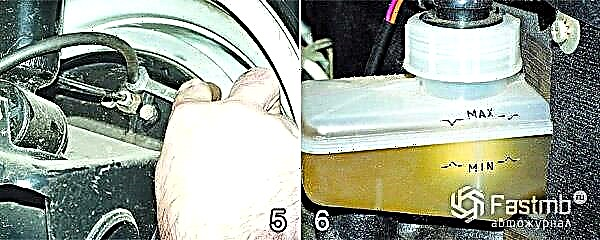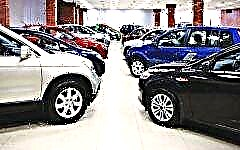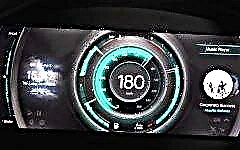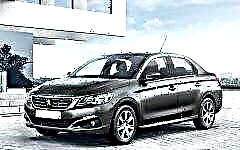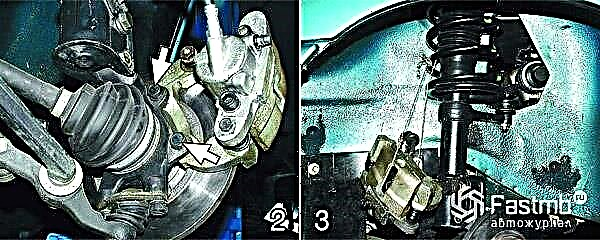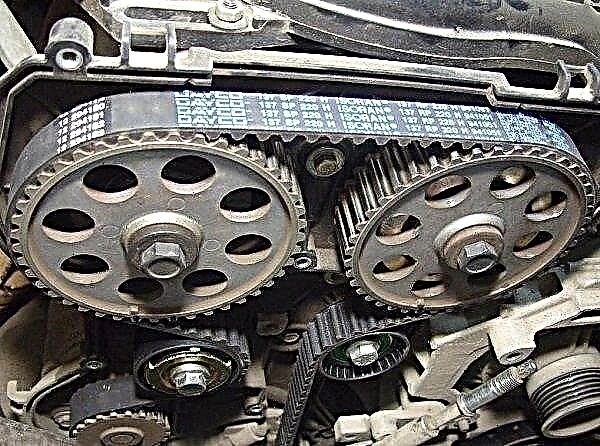
The content of the article:
- Important tips for preparing your car for winter
- Checking the condition of winter tires
- Battery health
- Checking all process fluids
- Comprehensive engine diagnostics
- Suspension condition
- Checking the condition of belts and pipes and the tightness of their connections
- Monitoring the efficiency of the heating system
- Brake system diagnostics
- Checking seals and wiper blades
- A set of necessary accessories
Winter operation is the most difficult period of time for a motorist, and we are talking not only about the difficulty of driving at low temperatures, but also about increased loads on the car. Regardless of the brand and cost of the machine, it is necessary to take measures aimed at minimizing the risk of breakdowns and emergency situations. Let's take a look at ten of the most effective ways to prepare your car for winter.
Important tips for preparing your car for winter
1. Checking the condition of winter tires

Operating the car in winter on summer or all-season tires is unacceptable, since it does not provide any protection against skids on slippery surfaces. Moreover, winter tire wear is determined not only by the tread depth, but also by a number of other factors.
So, you should pay attention to the number of studs remaining in the rubber, because the fewer there are, the lower the adhesion coefficient.
The condition of the thorns plays an equally important role. If you've been running rubber on a clean surface for a long time, most of the cleats are probably worn out and barely protrude beyond the tread.
Such spikes will not provide the proper level of protection and predictability in handling on slippery roads, so it is better to replace such tires.
Pay special attention to the condition of the tire - there should be no cracks and traces of excessive local wear, which can lead to loss of tightness and even to an explosion. Remember the main rule - even cheap new winter tires will be better than worn-out tires from a well-known brand.
2. Battery performance

In winter conditions, a significant load falls on the wiring and the battery, especially in cold start conditions. Even a battery that works properly in summer is not able to give you a guarantee of a trouble-free start in cold weather.
Before purchasing a new battery, you should contact a service station in order to check the charging current in the network. Otherwise, you risk ruining the new battery and throwing away the serviceable old one.
You should not neglect such old recommendations as checking the electrolyte level and charging from a stationary device before the beginning of the winter period. Make sure that the battery is clean and that the terminals are not oxidized - this is important, as dirt and process fluid stains allow current to flow and increase self-discharge, and oxidized terminals create additional resistance that prevents full charging.
3. Checking all process fluids

Regular replacement of oil, coolant and brake fluids is a prerequisite for the health of your car. As for the oil, the wrong choice of brand, especially the viscosity, which did not manifest itself in any way in the summer, in winter can be of decisive importance when starting a cold engine.
An equally important role is played by the heat exchange of the engine, since a clean coolant will ensure its timely uniform warming up, the serviceability of the interior heating system, and also prevent the engine from freezing at extremely low temperatures.
4. Comprehensive engine diagnostics

Minor malfunctions, which practically do not annoy the motorist in the warm season, can cause serious malfunctions at low temperatures.
Worn spark plugs, wiring faults and the engine control unit can manifest themselves in a breakdown or an unstable start in winter.
Especially dangerous are malfunctions that can lead to a stop of the car, because on a snow-covered highway even a warm interior instantly freezes, which cannot but affect the health of passengers.
5. Suspension condition

Stable grip of the coated wheels is ensured not only by good winter tires, but also by the correct operation of the suspension elements. In conditions of negative temperatures, worn out and low-quality rubber elements lose their elasticity, which accelerates the wear of more important elements and can lead to the suspension ceasing to work out all irregularities.
The struts, and shock absorbers in particular, also need to be diagnosed, and after detecting a malfunction, they must be replaced immediately.
Snow rolling is an additional source of pits and protrusions on the surface, which can cause damage quite quickly, so you should not count on the fact that a practically worn-out part will survive another season.
6. Checking the condition of belts and pipes and the tightness of their connections

As already mentioned, in the cold season, rubber products, if they do not lose, then significantly reduce their elasticity. For systems with circulating fluids, this is fraught with depressurization and leakage, which will subsequently lead to shutdown and possibly more serious problems.
As for the alternator belt and timing belt, their breakage can lead to much more sad consequences. If in the first case, a breakdown will cause a complete discharge of the battery and stop the car and will not lead to a long and expensive repair, then in the second case, for most modern models, an overhaul of the engine is inevitable.
7. Monitoring the efficiency of the heating system

The main problem that can be encountered in this case is the lack of efficiency in strong winds and negative temperatures, especially on a suburban road. This manifests itself in the gradual cooling of the passenger compartment, despite the operating oven, and can also lead to freezing of the windows, which will directly affect safety.
As such, you should check the functionality of the standard heater and take the necessary measures to repair it.
No less attention should be paid to rear window heating systems, and if a significant number of heating strips on it are faulty, you should purchase a repair compound that allows you to restore their functionality.
8. Diagnostics of the brake system

If the replacement of process fluids does not raise questions for anyone, then the diagnosis of the brake system does not seem to be an obvious necessity. However, it should be borne in mind that uneven distribution of braking forces can cause severe skidding on a slippery road.
Thus, replacing brake pads, and, if necessary, discs with drums, adjusting the brake system regulator and checking the brake master cylinder is a guarantee of your safety and predictable behavior of the car on the road.
9. Checking the seals and wiper brushes

Since in winter, especially in conditions of temperature changes, there is a high risk of door seals freezing and their subsequent damage, it is recommended to treat these elements with a special compound that preserves their elasticity and prevents the formation of an ice crust on the surface.
As for the wiper blades, in winter they experience a much more intense effect of snow, ice, dirt and aggressive reagents, therefore, to prevent damage to the glass and maintain normal visibility, it is recommended to replace them.
10. A set of necessary accessories

A tow rope, warning triangle, ignition cables, a small shovel and wheel chains can lie in your trunk for years without attention. But the moment you need them, the space they occupy in the cargo hold will be more than compensated for.
Make sure that the towing cable is suitable for your vehicle and can support a little more weight, as trying to pull out a stuck vehicle is much heavier. Lighting wires should be of sufficient length and quality clamps to ensure quick start-up and prevent possible damage to the wiring and even fire.
An additional jacket in the trunk or a survival kit, which is sold in any travel store, will be no less relevant.
Thus, following the above recommendations, you will be able to prevent a number of serious breakdowns, ensure your safety and facilitate the operation of the car in such a difficult season. Neglecting any of the above factors is fraught with the need for much more expensive repairs, so savings are not appropriate here.



